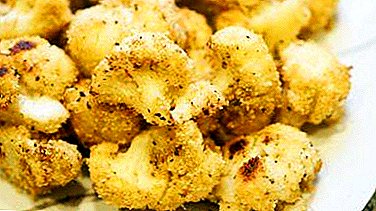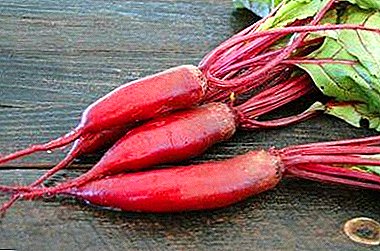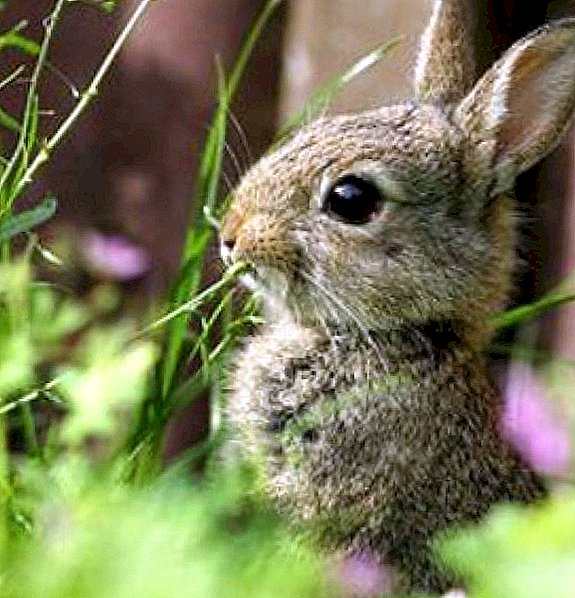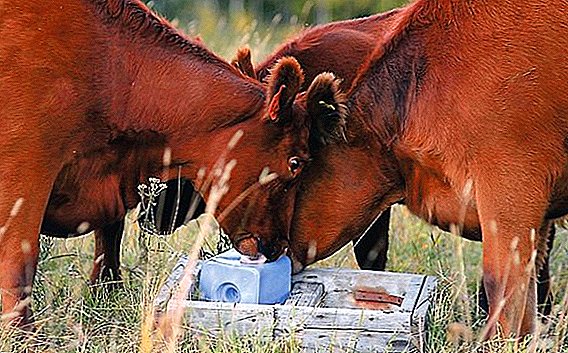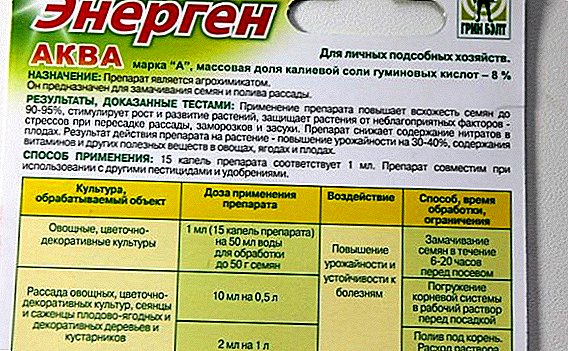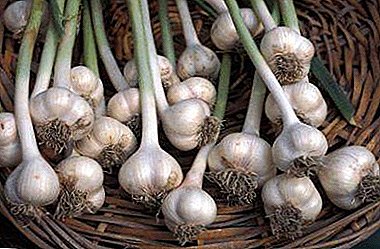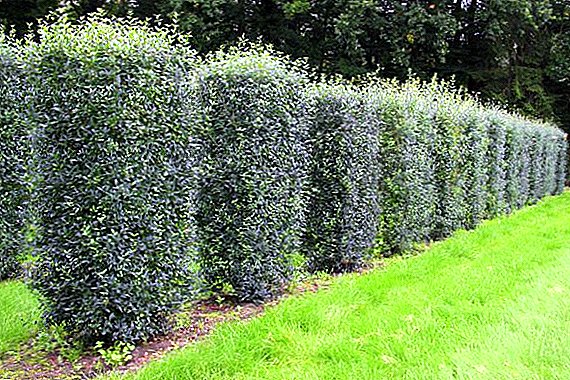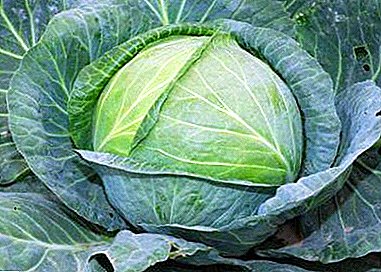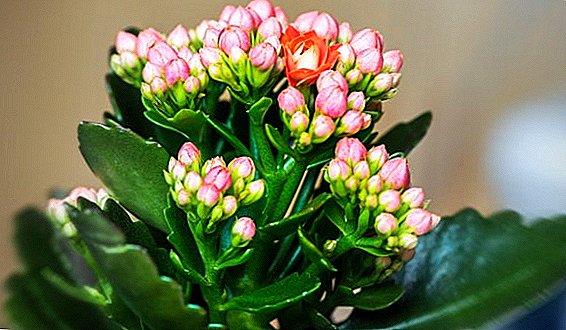 Many owners of Kalanchoe encountered yellow leaves, but not everyone knows exactly why this happens and how to cope with such a phenomenon. It turns out that this flower condition can be quickly cured. Read on for how to do this.
Many owners of Kalanchoe encountered yellow leaves, but not everyone knows exactly why this happens and how to cope with such a phenomenon. It turns out that this flower condition can be quickly cured. Read on for how to do this.
Features care Kalanchoe
The key to a healthy Kalanchoe is the right care. Features of growing plants as follows.
Microclimate
The plant loves bright diffused light. East and south-east window sills will be suitable for placement. It is also important to observe the duration of the lighting. Optimum light day for a plant - 11-13 hours. If there is not enough natural light, buy phytolamp in a specialized store and install it.
Did you know? The name "Kalanchoe" comes from the Chinese language and translates as "viviparous."
The flower is unpretentious to temperature. In summer, keep it at a temperature of + 18 ... + 23 ° С. In winter, the optimal thermometer performance is + 12 ... + 16 ° С.
The flower positively perceives room humidity in the range of 50-60%. High levels of moisture will be disastrous. Kalanchoe tolerates drought better, but a long stay in the heat and dryness can also be harmful.
Video: Secrets of care and cultivation of Kalanchoe at home
Watering and fertilizer
In the summer, water the flower once a week. In winter, water irrigation up to 1 time in 2 weeks. Moisten only dried substrate. Spray succulent can not. You can only wipe the leaves with a damp sponge.
Fertilize succulent should be only in spring and summer. Blooming Kalanchoe also fertilized in the fall, the frequency of fertilizing - 1 time in 3 weeks. Non-flowering plants are fed 1 time per month.
Better flower perceives:
- universal remedies for succulents;
- complex mineral-organic top dressing with a low nitrogen content.
Experienced growers are advised to reduce the recommended dose by 2 times.
We advise you to read about the most popular types of Kalanchoe.
Transplant and pruning
Succulent rhizome grows quickly, so the plant needs to be transplanted every year. A suitable period is the second half of spring.
Choose a pot 1-2 cm larger than the previous one in diameter. Capacity should not be very tight. Too spacious pots should also be avoided.
The flower grows well in a universal substrate for succulents.

If desired, you can prepare the soil yourself, mixing in equal proportions:
- peat;
- turf ground;
- sheet soil.
Transplant as follows:
- Place a new drain on the bottom of the pot.
- Pour a small part of the substrate.
- Remove the flower.
- Without removing the earthen ball from the root, move the plant to a new pot.
- Pour residue of substrate.
- Water the plant.
Kalanchoe after transplantation adapts on average for 7 days.
Important! Feed Kalanchoe after transplantation can be no earlier than a week.
To Kalanchoe bush was neat, it is formed annually. Spring shoots need to be cut. In summer or after flowering, the plant is pinched.
Why do the leaves of Kalanchoe turn yellow and dry?
Succulent leaf plates often turn yellow for natural reasons. Old parts die off to grow new ones. You should not worry if there is a flowering, the stems are strong, there is no damage, but the lower leaves dry out and fall off. The flower develops as it should.
Pest attacks are also possible. aphids, scutes, spider mites or mealybug. Their appearance is easy to notice, examining the leaves. Aphid - a small insect of dark shade, attached to the inside of the leaf. Shchitovku determined by translucent shell. Outwardly, they resemble rounded tubercles with a diameter of not more than 3 mm.

A spider mite leaves a thin spider web on the leaves. The pincers themselves stick to the inside of the sheet. Mealybug is recognized by white bloom, similar to flour. The worms themselves are white, oblong in shape, often covered with the same whitish bloom. Pests drink vegetable juices from leaf plates, because of which the leaves are covered with spots, weaken and turn yellow.
However, the yellowing of leaves in Kalanchoe often associated with improper care. Florists identify the following reasons.
Read more about the diseases and pests of Kalanchoe.
Failure of landing technology
A common mistake when planting a plant is the wrong pot.
The root system of the flower is small, so the owners mistakenly choose a close pot. Indeed, a small container is better suited to the root of a plant. However, in too small a pot rhizome will be difficult to develop. The state of the plant is broken. As a result, diseases will develop. Yellowing of leaves is one of the possible consequences of a close pot.
Kalanchoe does not like big pots. In such conditions, the plant is under stress, depleted, the foliage turns yellow and falls.
The quality of the leaves is affected by the lack of drainage. At the bottom of the tank when planting lay the drainage mixture. A good option - expanded clay. It will regulate soil moisture and prevent water from stagnating.

Incorrect location
Kalanchoe is adversely affected by daylight duration of less than 11 hours. Pot with a plant is better placed in a place with bright diffused light. The location on the north and west windows, especially in winter, is fraught with a lack of light. Succulents growing in the shade cannot withstand a lack of light. Platinum sheets dry, turn yellow and fall off.
It is also undesirable to have a plant near the battery in the heating season. In this place it is difficult to maintain optimal conditions.
Did you know? Madagascar priests used Kalanchoe for medical purposes. The juice from the leaves disinfected the wounds and moistened the sun-dried skin.
Non-compliance with conditions of detention
Violation of the microclimate negatively affects the state of the plant.
The temperature below + 10 ° С will become destructive. From a long stay in the cold, kalanchoe can die. You should not place it in a room with temperature indicators above + 25 ° C. Heat also contributes to yellowing of the leaves.
Flower growers are advised not to place the plant in conditions of high humidity. If the moisture level in the room is above 80%, the likelihood of mold and mildew is high. If the tips of the leaves have dried and turned yellow, the reason may lie in the dryness of the air. As if the flower did not like dry air, during a heat or heating season the moisture level becomes critically low. This causes problems, in particular, the yellowness and dryness of the sheet plates.

Irrigation Disruption
Improper watering often causes yellowing of the leaves.
On insufficient watering says dry leaf plates. Over time, they become thinner and turn yellowish.
More dangerous for Kalanchoe plentiful frequent hydration. The first sign of over-watering is the softness of the leaf plates. Unlike inadequate watering, they rather wither rather than dry. Leaves turn yellowish. If you do not correct the situation, it becomes difficult for them to stay on the stem.
Read also what to do if Kalanchoe does not bloom.
Feed errors
The main mistake with fertilizer is the wrong remedy. Kalanchoe well assimilates universal complex feeding and feeding for succulents. It is advisable to look at the composition and choose a fertilizer with a low amount of nitrogen. Other flower feeding perceives not the best way. Also pay attention to the type of drug. It should be a liquid water-soluble agent that is added to the water during irrigation.
Frequent fertilizer is a typical problem for beginning flower growers. Many people think that the more money, the better Kalanchoe will grow and bloom. Everything needs measure. The maximum frequency of make-up - 1 time in 3-4 weeks. In winter, fertilizer can not be applied. However, rare irregular dressings are also detrimental to the flower.
Flower growers know one trick to maintain plant health. Kalanchoe does not tolerate highly concentrated doses of fertilizers. If you use universal drugs according to the instructions, the flower will be overfed. Poor condition, he will show yellowed leaves.

What to do and how to treat the plant?
Yellow leaves are not a disease, but a symptom. This is a signal of the plant about the wrong care. No drugs will not help if watering, microclimate or dressing harm the flower. The task of the owner is not to get rid of the visible manifestation, but to eliminate the cause.
A common cause of yellowing foliage is improper care. Florist first thing to identify the error in the cultivation. To cure a flower, you need to adjust care.
From frequent watering plants rot roots. To cure a flower, transplant it into a new container. When performing transplanting, clean the root from the ground. Putrid parts need to cut. Process the cuts with crushed coal for disinfection.
Pests first need to be removed from the leaves. A sponge moistened with soapy water will do for this purpose. Clean the succulent with an insecticide. For Kalanchoe suitable means "Inta-vir", "Malathion" or "Metaphos".
Important! Be sure to remove the affected parts of Kalanchoe! Do not leave them on the stem.
Changing the approach to growing succulent, you will improve its condition. In the future, with the right actions, this problem will not occur again.
Preventive measures
The best prevention of yellowing leaves - competent care. It affects not only the general condition of the flower, but also resistance to diseases and pests. With proper cultivation, the possibility of insect attacks is virtually eliminated.
Measures to prevent yellowing of leaves in Kalanchoe:
- buy flower in specialized stores - unscrupulous sellers can put up for sale a weakened or infected plant;
- properly care for the plant - organize the optimal microclimate, control watering and feeding, replant the plant in time;
- periodically inspect the leaves for insect pests;
- if desired, it is possible to use an insecticide for the prevention of pests, for example, Aktar, however, preparations of this kind are moderately toxic — flower growers advise once again not to resort to needless treatments and simply properly care for the plant.
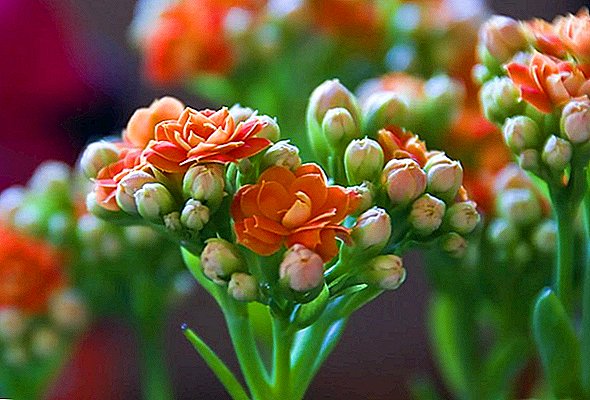
Yellow leaves in Kalanchoe - the problem is not dangerous, but requires attention grower. Proper care and timely removal of pests will help get rid of yellowed foliage. As a bonus - the owner will receive a healthy and beautiful flower.



